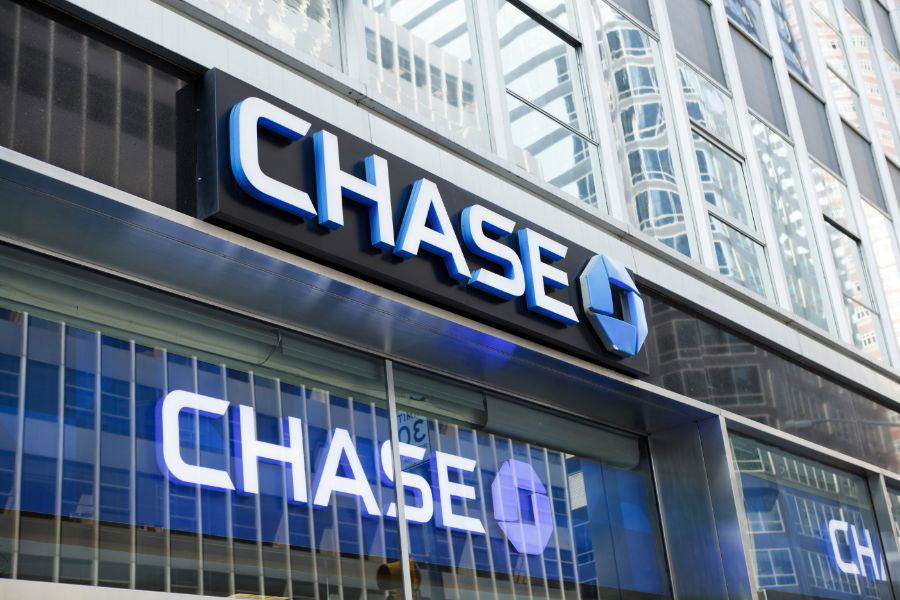Looking for a checking account you can open online in minutes—without giving up access to real branches? Chase makes it easy to get started with options that include no overdraft fees, easy mobile tools, and thousands of ATMs across the country.
Whether you’re opening your first checking account or switching banks, Chase offers several account types to fit different needs. Here’s how to open a Chase checking account, compare your options, and avoid common fees.

What You Need to Open a Chase Checking Account
Opening a Chase checking account is quick and straightforward, whether you’re doing it online or at a branch. To get started, you’ll need to provide a few key details to verify your identity and set up your account.
Here’s what you should have ready:
- Social Security Number or Taxpayer Identification Number – Chase uses this to verify your identity.
- Valid government-issued ID – A driver’s license, state ID, or passport will work.
- U.S. mailing address, phone number, and email – This is used to send account details, statements, and important notifications.
- Co-owner information (if under 18) – If you’re opening an account for someone under 18, a parent or legal guardian must be added to the account.
There’s no need to bring cash to open your account immediately, but you’ll need to fund it before you can start using it. This can be done through a transfer, direct deposit setup, or mobile check deposit once the account is open.
Chase Checking Account Options
Chase offers three main checking accounts, each with different features, fees, and benefits. Here’s a quick side-by-side comparison to help you pick the one that fits your needs.
| Account Name | Monthly Fee | How to Waive the Fee | Overdraft Fees | Paper Checks | Best For |
|---|---|---|---|---|---|
| Chase Total Checking® | $12 | $500 direct deposit, $1,500 daily balance, or $5,000 across Chase accounts | Standard fees apply | Yes | Everyday banking with fee waivers |
| Chase Secure Banking℠ | $4.95 (no waiver) | No waiver available | No overdraft fees | No | Simple banking with no surprises |
| Chase Premier Plus Checking℠ | $25 | $15,000 average balance or linked Chase mortgage | Standard fees apply | Yes | Higher balances and extra perks |
Each account includes access to the Chase Mobile app, thousands of ATMs, and in-person support at over 4,700 branches.
Chase Total Checking®
Chase Total Checking® is the most popular option and works well for most people. It includes access to mobile banking, Zelle® transfers, Chase Overdraft Assist, and standard paper checks. You’ll get full access to all Chase ATMs and branches.
- Monthly Fee: $12
- How to Waive It: $500 in direct deposits per month, $1,500 daily balance, or $5,000 combined across qualifying Chase accounts
- Best For: Everyday use with easy ways to avoid fees
Chase Secure Banking℠
Chase Secure Banking℠ is a low-cost account designed to help you avoid surprises. There are no overdraft fees, and the $4.95 monthly fee can’t be waived—but it’s predictable. You won’t get paper checks, but you can pay bills online and use Chase ATMs for free.
- Monthly Fee: $4.95 (no waiver option)
- Overdraft Fees: None
- Best For: Budget-conscious users who want a flat monthly fee
Chase Premier Plus Checking℠
Chase Premier Plus Checking℠ includes interest on your balance, free Chase design checks, and no fees on up to four non-Chase ATM withdrawals per month. You can also link up to two other Chase checking or savings accounts to waive their monthly fees.
- Monthly Fee: $25
- How to Waive It: $15,000 average balance across qualifying Chase accounts or a linked Chase mortgage
- Best For: Customers who maintain higher balances and want added perks
Other Chase Checking Accounts
In addition to its core options, Chase offers checking accounts tailored for kids, students, and customers who want enhanced service.
Kids & Students Checking Accounts
Chase provides several checking accounts that help kids and teens learn about money while giving parents the tools to stay involved. These accounts are designed with age-appropriate features and flexible oversight.
Chase First Banking℠
- Designed for kids ages 6–12 (available through age 17)
- Parent-owned with built-in spending controls and money lessons
- Monthly Fee: $0 (requires a linked Chase checking account)
- How to Open: Must be opened by a parent
Chase High School Checking℠
- For teens ages 13–17, co-owned with a parent
- Includes mobile banking, Zelle®, and direct deposit
- Monthly Fee: $0
- How to Open: Must be opened in a Chase branch
Chase College Checking℠
- For students ages 17–24
- No monthly fee for up to 5 years with student status
- Monthly Fee: $12 or $0 with student status, direct deposit, or $5,000 daily balance
- How to Open: 17-year-olds must apply in branch; 18+ can apply online
Premium Checking Accounts
For customers who maintain higher balances or want more service features, Chase offers premium checking accounts with added flexibility, waived fees, and priority access.
Chase Sapphire℠ Banking
- No ATM fees worldwide
- Higher withdrawal limits and priority support
- Monthly Fee: $25 or $0 with $75,000 in combined qualifying balances
Chase Private Client Checking℠
- Includes 24/7 dedicated support and waived fees
- Exclusive events and higher transaction limits
- Monthly Fee: $35 or $0 with $150,000 in combined balances
These accounts are worth considering if you’re opening a family account, managing college expenses, or looking for more personalized service.
Pros and Cons of Chase Checking Accounts
Like most big banks, Chase offers strong convenience and account variety—but that comes with some tradeoffs. Here’s a quick look at what to expect before signing up.
Pros
- Wide access: Over 15,000 ATMs and 4,700 branches nationwide
- Mobile tools: Highly rated app with mobile deposit, Zelle®, and account alerts
- Account variety: Options for kids, students, everyday users, and high-balance customers
Cons
- Monthly fees: Many accounts charge fees unless waiver conditions are met
- Low interest: Most checking accounts earn little or no interest
- Out-of-network ATM fees: Applies if you exceed limits or use non-Chase ATMs
The best account for you depends on how you bank, how often you need in-person support, and whether you can meet balance or deposit requirements.
How to Open a Chase Checking Account
You can open a Chase checking account online or in person at a branch. Both options are quick, and you’ll only need a few pieces of information to get started.
To open an account, make sure you have:
- Social Security Number or Taxpayer Identification Number
- Valid government-issued photo ID
- U.S. mailing address, phone number, and email
- Co-owner information if the account is for someone under 18
You’ll also need to fund the account after opening. This can be done by transfer, mobile deposit, or direct deposit setup.
Opening an Account Online
Opening a Chase account online takes just a few minutes. Here’s how:
- Visit the Chase website and choose your checking account
- Click “Open account” and fill in your personal information
- Review the terms and disclosures
- Add your initial funding method
- Submit your application
Once approved, you’ll get a confirmation email. Your debit card and account details will arrive by mail within 7–10 business days.
Opening an Account at a Branch
If you prefer personal assistance, you can open an account at any Chase branch:
- Use the branch locator on Chase’s website or app to find a nearby location
- Bring your ID and required personal information
- A banker will walk you through your account options and complete the application
- You’ll receive a temporary debit card right away
- Your permanent card will arrive by mail within 7–10 business days
Opening in person is a good choice if you want help choosing the right account or have specific questions.
Chase Checking Account Fees and How to Avoid Them
Chase checking accounts come with monthly service fees, but most can be waived if you meet certain requirements.
- Chase Total Checking® – The monthly fee is $12. You can avoid it by receiving $500 or more in direct deposits each month, keeping a $1,500 daily balance, or maintaining an average daily balance of $5,000 across qualifying Chase accounts.
- Chase Secure Banking℠ – The monthly fee is $4.95 and cannot be waived. This account is designed for people who want simple, predictable pricing with no overdraft fees.
- Chase Premier Plus Checking℠ –The monthly fee is $25. You can waive it by keeping a $15,000 average daily balance across linked Chase accounts, having a linked Chase mortgage, or qualifying as an active-duty service member or veteran with valid military ID.
Choosing the right account, and meeting the fee waiver conditions, can help you avoid paying monthly charges just to keep your money accessible.
Chase Minimum Balance Requirements
Chase minimum balance requirements vary by account and are tied to monthly fee waivers.
- Chase Total Checking® – $1,500 daily balance or $5,000 across linked Chase accounts to avoid the $12 monthly fee
- Chase Secure Banking℠ – No minimum balance requirement
- Chase Premier Plus Checking℠ – $15,000 average daily balance across linked accounts or a Chase mortgage to waive the $25 monthly fee
Make sure to check your balance regularly or set up alerts in the Chase Mobile app to avoid falling below the threshold.
Final Thoughts
Chase checking accounts offer something for almost everyone—from students and families to customers with large balances. The ability to bank online, in person, and through a well-designed app makes Chase a convenient choice.
But fees can add up if you don’t meet the waiver conditions, and the accounts don’t offer high interest rates. Before opening an account, think through how you use your money and which features matter most. Then choose the option that fits your financial habits and goals.


Leave a Reply